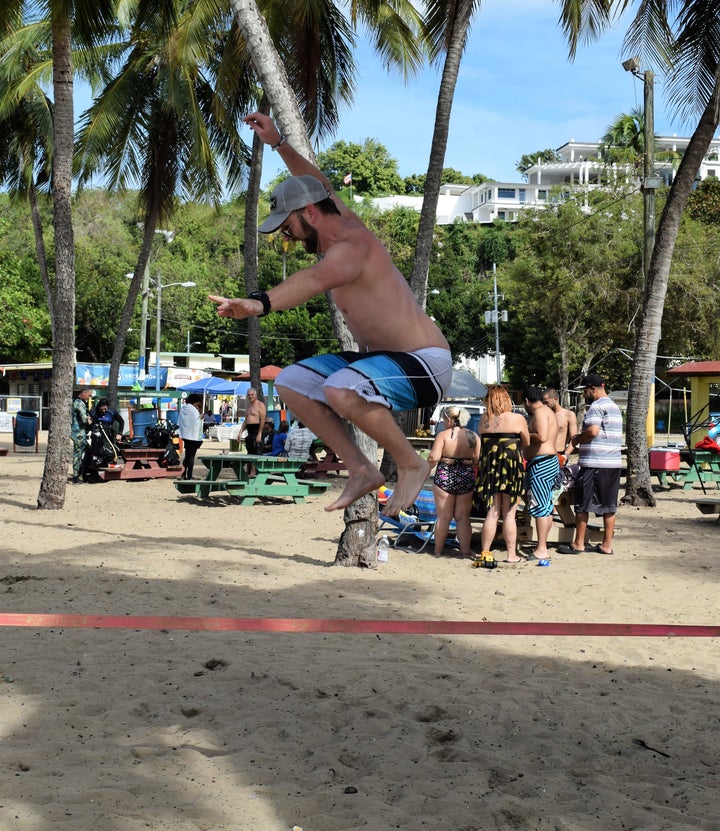Phillipe Petit is well-known for his death defying high wire walking between the Twin Towers, across Niagara Falls, the Eiffel Tower and many other buildings. Aside from the euphora from a successful walk, are there any other benefits to this sport?
The answer lies in its sister sport, slackling, which has been around for years and has even made appearances on the Super Bowl halftime show. Slacklining requires two support structures and a two-inch webbing to ratchet down very similar to a tightrope walking. The slackline may be set up to different distances and heights and performed either barefoot or with shoes.

James Spencer recounts his first time on the slackline:
Just like trying anything new for the first time, you have no perception of what to expect; therefore, it tends to be very scary upon the initial attempt. After you accomplish confidence, the excitement of being able to walk across the slackline or perform a new trick is priceless. It becomes an addictive process due to its fun and sociable nature. Like learning any new skill, you need continuous reps for the nervous system to master the task. To me, this is a very similar experience to how it feels learning a new skateboarding trick. It takes countless reps and plenty of sweat before I could conceptualize the task and confidently land the trick.
For James, the effort is worth the gains, as emerging research suggests that slacklining has both physical and cognitive benefits. In a study with female basketball players, six weeks of supervised slacklining training resulted in better jump performance, postural control, and myoelectrical activity compared to controls. Gains were also found in older adults (mean age: 62 years) who underwent a six-week slackline training. The authors reported increased efficiency in their striatral network, which is attributed to motor learning, self-initiated movements, and executing action sequences.
A key feature of slacklining is the balance and proprioceptive awareness. In my own research, we reported the cognitive benefits of being “proprioceptively dynamic”. We gave adults (ages 18 to 59) a series of proprioceptively dynamic activities. These included crawling on a beam, moving while paying attention to posture, balancing, and climbing trees.
We also tested their working memory using a standard test – backward digit recall. Participant’s working memory was tested before beginning the balance training and proprioceptively dynamic activities, and then after two hours of training.
Results – After just two hours of training, working memory capacity had increased by 50 percent, a dramatic improvement.
In contrast, participant in the control groups who were stationary but either engaging in cognitive activities or static balance activities did not show the same cognitive improvements.
Although the potential cognitive gains of slacklining have not yet been tested, there is reason to believe that both the balance and proprioceptive nature of the sport may yield similar working memory benefits as well.
For James, he sees the benefit of the mental focus and awareness of the body in the athletes that he works with- “slacklining allows my athletes to be nimble and more resilient to injury”.
